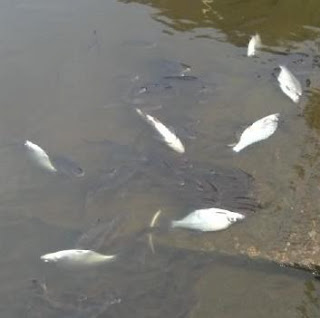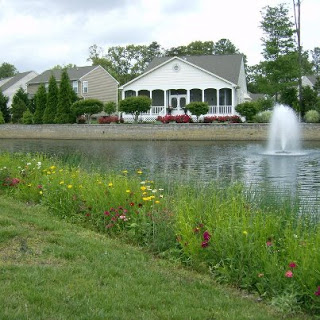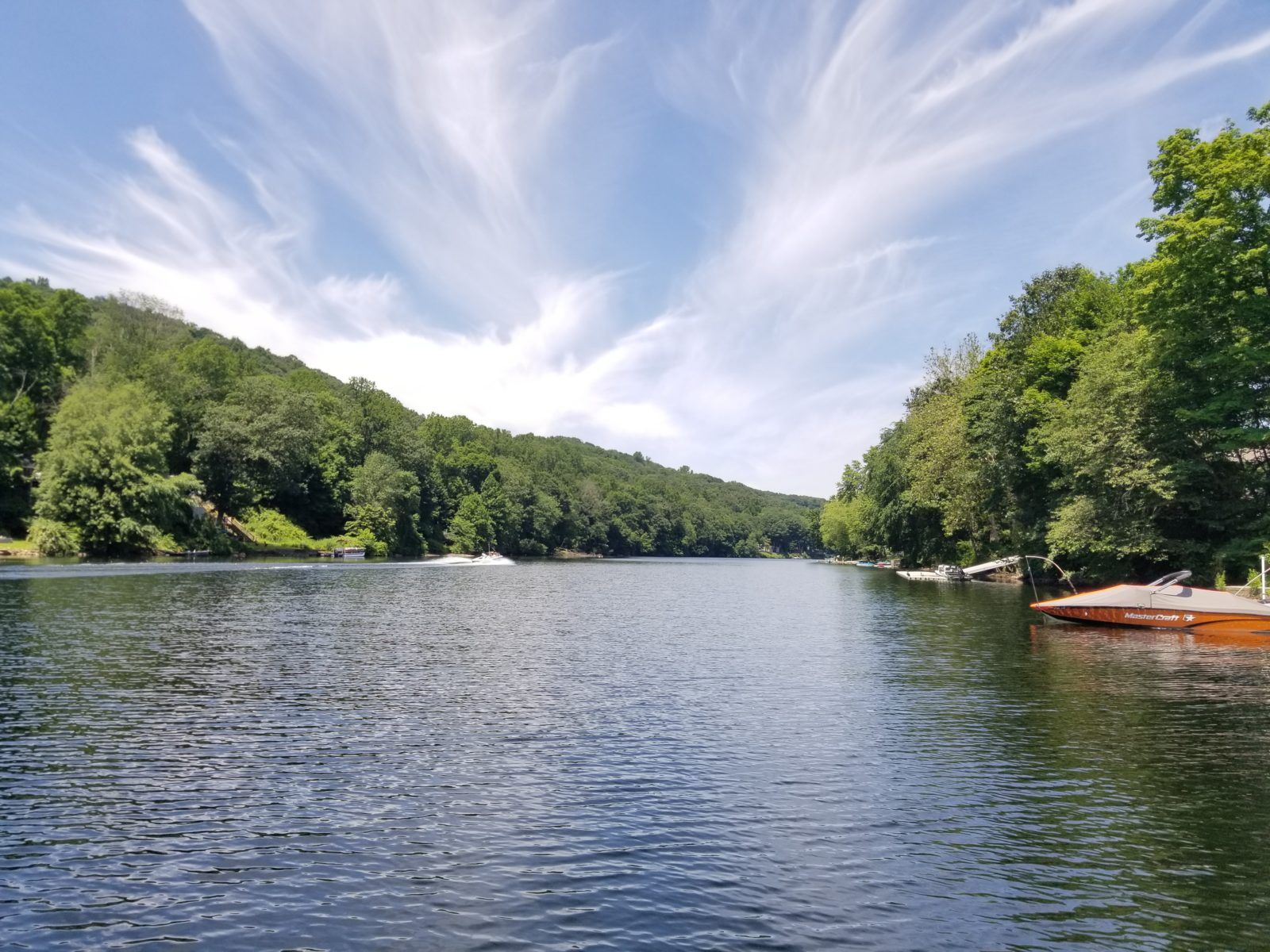By Industry Expert David Beasley, Fisheries Biologist
 Most ponds fit within one of two categories, “balanced” or “unbalanced”. Ponds that are unbalanced are often plagued with significant pond algae and vegetation growth. Looking back at our years of pond management, we have witnessed how some individual water bodies respond poorly to the extreme heat that is common in the summer.
Most ponds fit within one of two categories, “balanced” or “unbalanced”. Ponds that are unbalanced are often plagued with significant pond algae and vegetation growth. Looking back at our years of pond management, we have witnessed how some individual water bodies respond poorly to the extreme heat that is common in the summer.
Ponds that are classified as “unbalanced” are at high risk of a fish kill on an annual basis. Low Dissolved Oxygen (DO) levels are often responsible for killing fish, but the low oxygen levels are simply a symptom of the real problem which is excess nutrients, such as Phosphorus and Nitrogen, and high water temperatures. Until unstable ponds strike a balance with their nutrient load they will continue to experience undesired plant and algae growth and face the risk of a fish kill.
Even when professionally managed, ponds can suffer from an unbalanced fate. Pond management must include more than just weed and algae treatments if it is to be truly successful. We observe a few ponds every year that experience fish kills. Each of these ponds falls within the category of being unbalanced.
Plants and algae require proper temperature, nutrients and sunlight to grow. As favorable weather conditions allow plant matter to thrive, unbalanced ponds increasingly become more and more unstable. In addition to this, the need for oxygen in ponds is highest when water temperatures reach the 80’s. During these warm temperatures, waters ability to hold oxygen is at its lowest. These two factors team together to reduce the stability of the ponds oxygen supply, making the scenario of a fish kill more probable in the summer months.
 If a pond is continually in need of management to keep algae and vegetation at an acceptable level, it is naturally unbalanced and is susceptible to fish kills. Many pond algae species can grow very rapidly under the correct conditions and as result the biomass of algae can rapidly shift to a very dense population. Unbalanced ponds often require frequent algae and vegetation treatments. Even with treatments every couple weeks, unbalanced ponds can have algae densities reach the point where a fish kill is probable. This high risk of a fish kill is likely to reoccur over the years unless steps are taken by the property owner to break this cycle.
If a pond is continually in need of management to keep algae and vegetation at an acceptable level, it is naturally unbalanced and is susceptible to fish kills. Many pond algae species can grow very rapidly under the correct conditions and as result the biomass of algae can rapidly shift to a very dense population. Unbalanced ponds often require frequent algae and vegetation treatments. Even with treatments every couple weeks, unbalanced ponds can have algae densities reach the point where a fish kill is probable. This high risk of a fish kill is likely to reoccur over the years unless steps are taken by the property owner to break this cycle.
Nuisance vegetation and algae growth are a symptom of the problem, not the problem. Nutrients are the problem. For water bodies that have difficulty maintaining balance, it is critical that other steps are taken to manage the nutrient load other than just treating undesired plant and algae growth. Simply treating the growth is only putting a band-aid on the actual issue. It is important to find ways to remediate the existing in water nutrient load while preventing future nutrient accumulations.
Many tools are available to help reduce nutrients. One of the most overlooked ways to reduce nutrients is allowing beneficial vegetation to grow around the edges and other shallow areas of the pond. This vegetation can be aesthetically pleasing, with a variety of colorful flowers, leaving few reasons why pond owners would not desire these beneficial plants. The vegetation will help filter the water of nutrients as well as displace algae in shallow water that would otherwise be an ideal environment for excessive algae growth.
Aeration is probably the single best tool to help balance a pond. The natural processes that occur in well aerated waters help to reduce the nutrient load on the pond and deliver adequate dissolved oxygen to the ponds during times of natural stress.
There are also products that can be applied to ponds to bind up all available Phosphorus, making it permanently unavailable, and thus greatly reducing the negative impact this nutrient would otherwise have on the pond.
Lake and pond owners and managers whose water bodies experience excessive plant and algae growth should strongly consider the use of an integrated approach that utilizes many of these tools to aid in the overall pond management strategy. The results of your efforts will improve the aesthetics and the health of the pond, while providing your fish with a much less stressful life.
Contact the experts at 888-480-5253 for all of your lake, pond and fisheries management needs.
David Beasley is a Fisheries Biologist with SOLitude Lake Management. Since 1998, SOLitude Lake Management has been committed to providing full service lake and pond management services that improve water quality, preserve natural resources, and reduce our environmental footprint. Services are available throughout the Eastern United States. Fisheries management consulting and aquatic products are available nationwide. Learn more about SOLitude Lake Management and purchase products at www.solitudelakemanagement.com.










